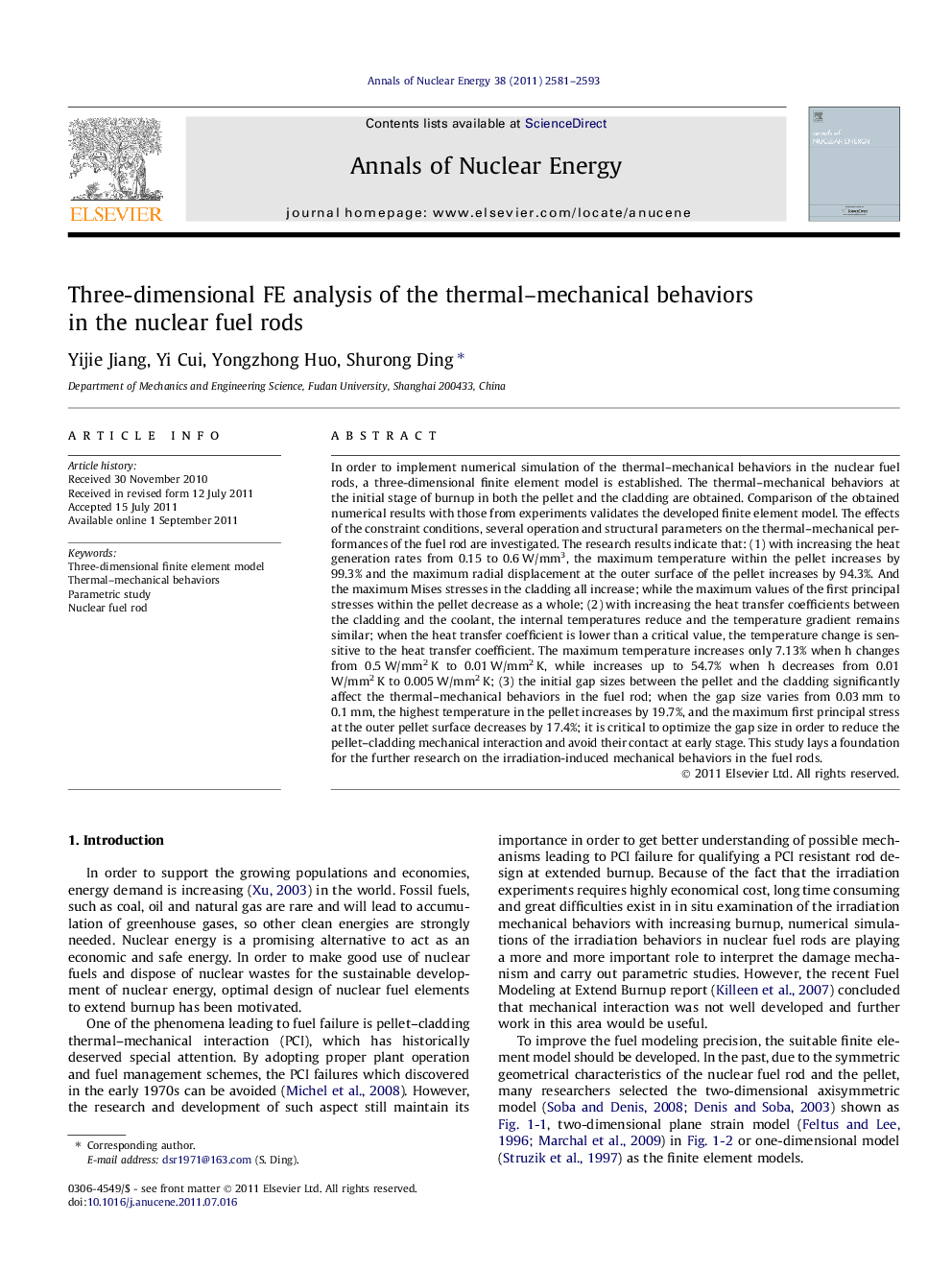| کد مقاله | کد نشریه | سال انتشار | مقاله انگلیسی | نسخه تمام متن |
|---|---|---|---|---|
| 1729192 | 1521161 | 2011 | 13 صفحه PDF | دانلود رایگان |

In order to implement numerical simulation of the thermal–mechanical behaviors in the nuclear fuel rods, a three-dimensional finite element model is established. The thermal–mechanical behaviors at the initial stage of burnup in both the pellet and the cladding are obtained. Comparison of the obtained numerical results with those from experiments validates the developed finite element model. The effects of the constraint conditions, several operation and structural parameters on the thermal–mechanical performances of the fuel rod are investigated. The research results indicate that: (1) with increasing the heat generation rates from 0.15 to 0.6 W/mm3, the maximum temperature within the pellet increases by 99.3% and the maximum radial displacement at the outer surface of the pellet increases by 94.3%. And the maximum Mises stresses in the cladding all increase; while the maximum values of the first principal stresses within the pellet decrease as a whole; (2) with increasing the heat transfer coefficients between the cladding and the coolant, the internal temperatures reduce and the temperature gradient remains similar; when the heat transfer coefficient is lower than a critical value, the temperature change is sensitive to the heat transfer coefficient. The maximum temperature increases only 7.13% when h changes from 0.5 W/mm2 K to 0.01 W/mm2 K, while increases up to 54.7% when h decreases from 0.01 W/mm2 K to 0.005 W/mm2 K; (3) the initial gap sizes between the pellet and the cladding significantly affect the thermal–mechanical behaviors in the fuel rod; when the gap size varies from 0.03 mm to 0.1 mm, the highest temperature in the pellet increases by 19.7%, and the maximum first principal stress at the outer pellet surface decreases by 17.4%; it is critical to optimize the gap size in order to reduce the pellet–cladding mechanical interaction and avoid their contact at early stage. This study lays a foundation for the further research on the irradiation-induced mechanical behaviors in the fuel rods.
► We establish three-dimensional finite element models for nuclear fuel rods.
► The thermal-mechanical behaviors at the initial stage of burnup are obtained.
► Several parameters on the in-pile performances are investigated.
► The parameters have remarkable effects on the in-pile behaviors.
► This study lays a foundation for optimal design and irradiation safety.
Journal: Annals of Nuclear Energy - Volume 38, Issue 11, November 2011, Pages 2581–2593